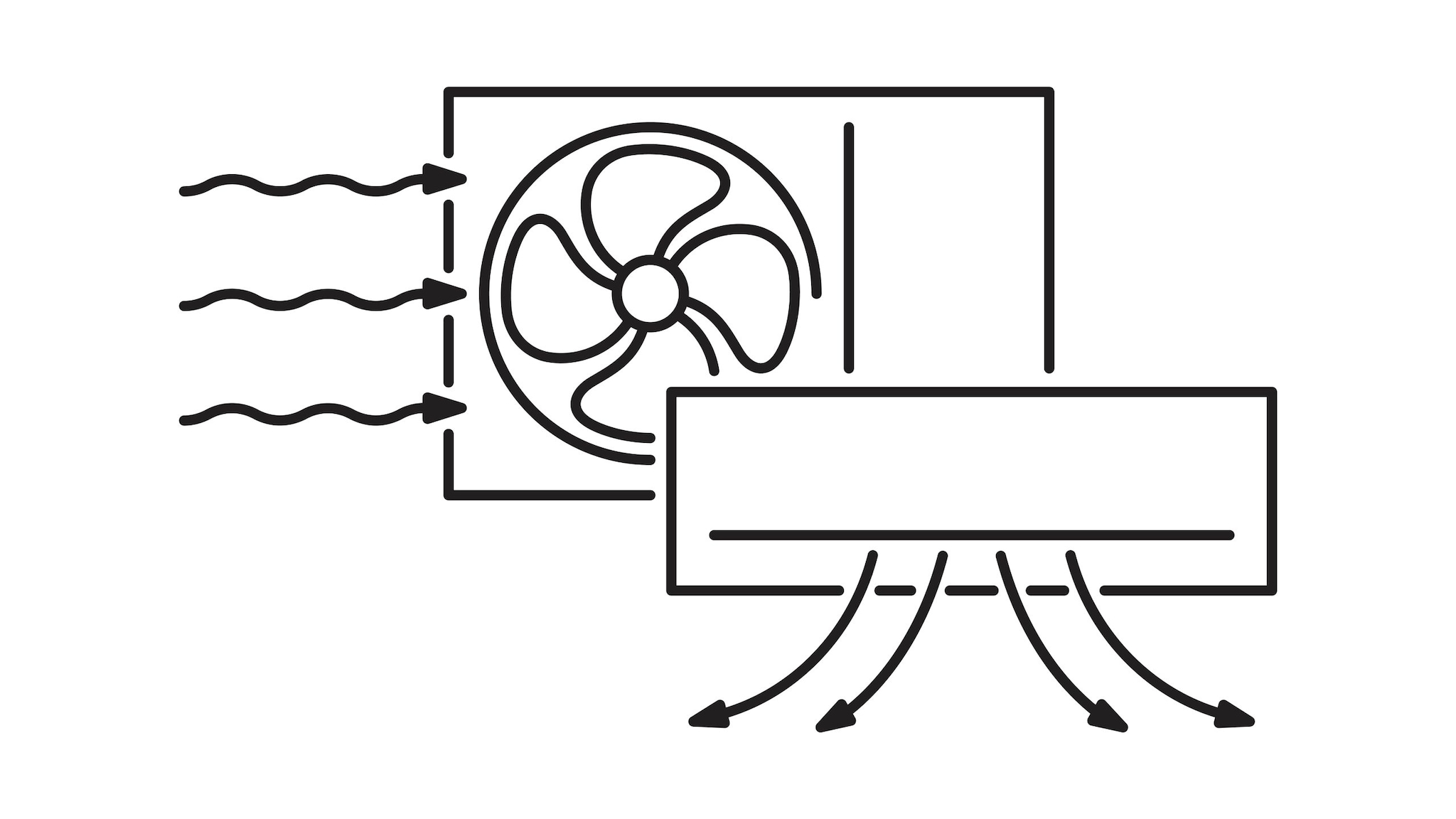What to know
- Current ventilation codes are the appropriate starting position from which building owners and occupants can provide ventilation improvements to improve air circulation in the workplace.
- Bringing additional outdoor air indoors helps to dilute occupant-generated respiratory viral particles.
- Maintaining air movement within indoor spaces helps to reduce opportunity for regions of germ concentration build-up.
- For interventions listed below that are marked with "**" please consult with professionals experienced in the proper selection, implementation, and commissioning of HVAC improvements.

Prevention steps and strategies
At a minimum
If you do nothing else, ensure existing HVAC systems are providing at least the minimum outdoor air ventilation requirement in accordance with ventilation design codes.
- Applicable codes are based on the year of building construction or latest renovation and intended building occupancy.
- Preferably, upgrade HVAC system performance to meet current ventilation code requirements at current occupancy levels.**
- This will develop a strong and lasting baseline upon which further interventions can be implemented.
Increase outdoor air
Increase the introduction of outdoor air beyond code-minimum requirements.
- Open the outdoor air dampers on your HVAC equipment beyond minimum settings to reduce or eliminate HVAC air recirculation. In mild weather, this will not affect thermal comfort or indoor humidity. However, this may be difficult to do in cold, hot, or humid weather.**
- Open windows and doors, when weather conditions allow, to increase outdoor air flow. Even a slightly open window can introduce beneficial outdoor air.
- Do not open windows and doors if doing so poses a safety or health risk (e.g., risk of falling, triggering asthma symptoms) to building occupants. Use caution in highly polluted areas when increasing outdoor air ventilation.
- Increasing outdoor air delivery will potentially increase energy costs. Using an energy recovery ventilator can lessen the potential energy and system implications of increased outdoor air.
Use fans
Use fans to increase the effectiveness of open windows.
- To safely achieve this, fan placement is important and will vary based on room configuration.
- Avoid placing fans in a way that could potentially cause contaminated air to flow directly from one person to another (see FAQ #4 on indoor use of fans).
- One helpful strategy is to use a window fan, placed safely and securely in a window, to exhaust room air to the outdoors. This will help draw outdoor air into the room via other open windows and doors without generating strong room air currents. Similar results can be established in larger facilities using other fan systems, such as gable fans and roof ventilators.
Adjust your HVAC system
Rebalance or adjust HVAC systems to increase total airflow to occupied spaces when possible.
- Increase total airflow to increase room air mixing and reduce viral particle concentration and subsequent exposure potential.**
- Turn off any demand-controlled ventilation controls that reduce air supply based on occupancy or temperature during occupied hours.**
- In homes and buildings where the HVAC fan operation can be controlled at the thermostat, set the fan to the "on" position instead of "auto," which will operate the fan continuously, even when heating or air conditioning is not required.
- Ensure restroom exhaust fans are functional and operating at full capacity when the building is occupied.
- Inspect and maintain exhaust ventilation systems in areas such as kitchens, cooking areas, etc. Operate these systems any time these spaces are occupied. Operating them even when the specific space is not occupied will increase overall ventilation within the occupied building.
- In non-residential settings where an infectious source was not known to have been present, run the HVAC system at maximum outside airflow for 2 hours, or until the building has achieved at least 3 air changes, after the building is no longer occupied. If an infectious source was present, see FAQ #7.
- Generate clean-to-less-clean air movement by evaluating and repositioning, as necessary, the supply louvers, exhaust air grilles, and/or damper settings.** See FAQ #2 on Directional Airflow. This recommendation is easier to accomplish when the supply and exhaust points are included as part of a "drop ceiling."
Content Source:
National Institute for Occupational Safety and Health
